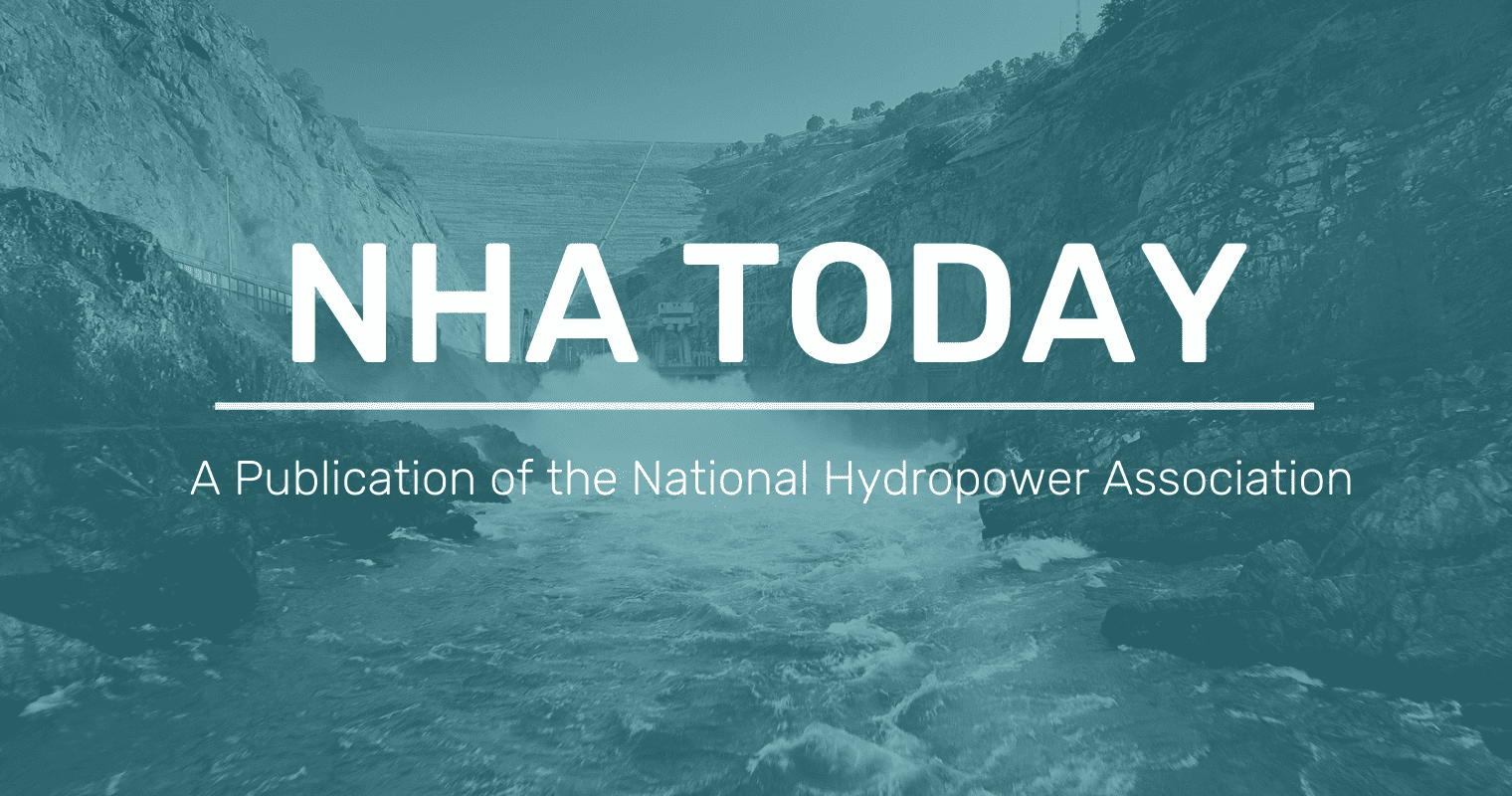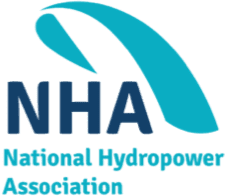
NHA Announces Joint Statement of Collaboration with River / Environmental Organizations
This morning, NHA, along with the environmental and river communities, unveiled the “Joint Statement of Collaboration on U.S. Hydropower: Climate Solution and Conservation Challenge”. The Joint Statement is an effort to advance the renewable energy and storage benefits of hydropower and the environmental and economic benefits of healthy rivers.
It’s not every day that the hydropower industry joins forces with American Rivers, the World Wildlife Fund, and other environmental and river organizations. Yet the need to address climate change motivated these our respective organizations to find new opportunities for collaboration.
After a two-and-a-half year long discussion, facilitated under Stanford University’s Uncommon Dialogue process, the parties have agreed to work together to address a range of challenges, including licensing / relicensing, dam safety, and valuing hydropower’s grid services.
Above all, the Joint Statement reflects the parties desire to start a new chapter in the relationship between the hydropower industry and the river and environmental communities.
The Joint Statement was featured in a New York Times article this morning, which you can read here: Environmentalists and Dam Operators, at War for Years, Start Making Peace, NY Times
IN THE KNOW…
California Energy Agencies Release Report Detailing Root Causes of August Blackouts
Last week, California’s leading energy organizations released a joint report digging into the causes of the August 2020 blackouts. NHA has prepared a brief Q&A highlighting major issues and what the report says about hydropower’s performance. You can read the Q&A by clicking the below.
What happened?
CAISO, California Public Utilities Commission and the California Energy Commission released a joint report providing some early answers to what caused the August blackouts. While the report is the first public analysis of the blackouts, the agencies did not have all the information (for instance, how specific resources performed) needed to answer some questions. Further analysis is likely to come out in the coming months.
What did the report say were the root causes?
The agencies point to multiple causes for the blackouts including climate-driven excessive heat across the west (reducing electricity imports), insufficient planning margins (CA uses a 15% planning reserve margin established in 2004) and issues with the day-ahead energy market (like under-scheduling of demand and virtual trading).
Why is it important?
CAISO and CPUC’s determination of the root causes will likely lead to market changes. Some of the issues mentioned in the report are already being discussed in stakeholder processes while other issues may get renewed attention. One existing stakeholder issue likely to get more attention is this recommendation found on page 66: “In coordination with the CPUC, continue to work with stakeholders to clarify and refine the counting rules as they apply to hydro resources, demand response resources, renewable, use limited resources, and imports” (emphasis added).
What does it mean for hydropower and pumped storage?
According to the report, hydropower resources performed well and met their resource adequacy obligations despite a low water year. As the report points out, because of its flexible nature, hydropower supplies a good portion of ancillary services to the grid. This ranged from 600MW to 1500MW during the most stressed times. And when the CAISO was running short of reserves, these services were vital. In fact, hydro’s performance was best during the net demand peak (peak demand minus the output of wind and solar). During the heat wave, the grid operator’s most difficult situations were around net peak so the ability of hydro to generate output during these times was crucial. Unfortunately, the report gives no indication of the role of pumped storage during the blackouts.
What’s next?
CAISO has scheduled a call for October 15th at 3pm PT to go over the report and answer stakeholder questions.
401 Legal Update: NHA Intervention Granted in 9th Circuit
Last week, NHA’s motion to intervene in support of the EPA’s Clean Water Act sec 401 Final Rule was successfully granted.
NHA is now an official party to the proceeding, which was initiated by 20 state Attorney Generals and is related, but not consolidated with, the other 9th circuit cases initiated by the Sierra Club, Columbia River Keeper, and others and American Rivers. The American Petroleum Institute and the Interstate Natural Gas Association of America were also granted intervenor status.
NHA’s Legal Committee will hold a conference call to discuss this proceeding, along with the other two cases in Eastern Pennsylvania and South Carolina, on Friday at 1:00pm ET (10:00am PT).
WHAT WE’RE READING
Utility Dive: To batteries and beyond: In a High-renewables World, Pumped Hydro Storage Could Be ‘the heavy artillery’
Experts say pumped hydro is notoriously difficult to site. But as more renewables come online, the industry is eyeing new locations and fresh technologies.
MEMBER UPDATES
Upcoming NHA Committees & Councils Conference Calls And Webinars
- Pumped Storage Development Council: Thursday, Oct.15th at 12:00 PM ET
- Legal Committee Call: Friday, Oct. 16th at 1:00 PM ET
- Add to Outlook Calendar Here
- MEC & DOE Transparency Lab Briefing Webinar Series: Tuesday, Oct. 20th at 3:00 PM ET
Hydraulic Power Month Webinars Continue; Tomorrow’s Topic is Asset Management
Hydraulic Power Month is in full-swing with another webinar happening tomorrow, Wednesday, October 14th.
Attendees of this webinar will receive an overview of asset management utilized in hydropower facilities by member companies, learn how it can be used to manage risk of aging assets, reduce the frequency of forced outages, and hear from both large and small operators who have implemented these processes within their hydropower fleets.
Additionally, this webinar will feature a presentation specific to generators within the asset management framework, so register now for this valuable webinar during Hydraulic Power Month! Also, tune-in to Hydraulic Power Month webinars happening next week, October 21st and the final webinar of the month happening on October 28th.
REGISTER NOW: NW Regional Meeting/Workshop
We are going on tour – A Tour of Bonneville Hydropower Project, that is!
Join NHA and the Northwest Hydroelectric Association (NWHA) on October 27th for the Northwest Regional Meeting/Workshop, which includes a virtual tour of Bonneville Dam.
Upcoming Virtual Event: “Ask Me Anything” With Hydro-Quebec
New England Women In Energy and Environment is hosting an “Ask Me Anything” Virtual Session with Hydro-Quebec’s President and CEO, Sophie Brochu.
The event is taking place tomorrow, October 14th at 4:00 PM ET. Register for the virtual event at the link below.
Dates to Remember
October 14th: Hydraulic Power Month Webinar: Register Here
Ongoing: Click Here to see all upcoming NHA Regulatory Filings
STAY UP-TO-DATE
NHA’s Upcoming Events
Follow NHA’s response to the ongoing COVID-19 pandemic and the status of our upcoming events.
Clean Currents 2021, A New Current Will Flow
With an eye towards 2021, and confidence in the nation’s ability to address COVID-19, NHA recently announced the creation of Clean Currents 2021, a new industry-led tradeshow and conference that will bring all waterpower technologies together – conventional hydropower, pumped storage, small hydro, and marine energy.
Clean Currents 2021, which will be held October 20-22 at the Georgia World Congress Center in Atlanta, marks the evolution and growth of the waterpower industry.


